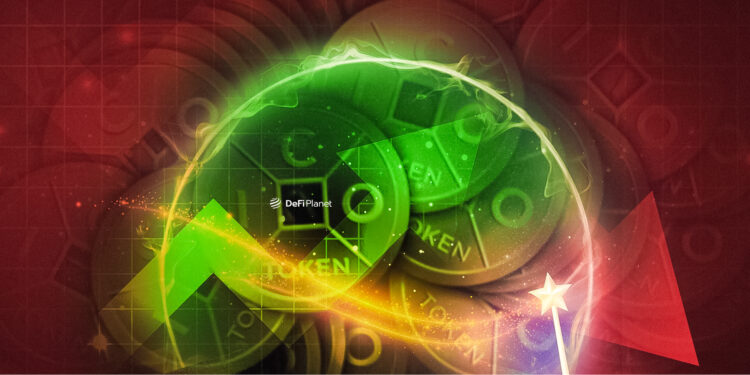Over the course of the past decade, the cryptocurrency market has experienced massive and rapid growth, with several tokens reaching billion-dollar valuations.
Despite the market’s rapid expansion, it is unusual for many tokens, particularly those in the top 100, to fail or see continuous devaluation. This is due in part to the practice of burning tokens.
Every significant cryptocurrency project, including Bitcoin and Ethereum, has, in some manner, ‘burned’ tokens to regulate their value at least once. In fact, some projects do it regularly.
Although not necessary for the operation of a cryptocurrency, burning tokens is crucial for maintaining its relevance.
This article explores what “burning cryptocurrencies” is, how it works, and examples of past token burn implementations.
What is Token Burning?
Token burning is simply a strategy used to regulate the value of a crypto asset by controlling its supply. It involves permanently removing a specific number of tokens from circulation. The process is executed by sending these tokens to a public address without a private key, rendering them inaccessible and effectively removing them from the market.
Token burning is a deflationary measure as it decreases the total tokens in circulation over time, leading to a scarcity of tokens. This scarcity can boost demand and increase the token’s value. The reduced supply can also make the tokens in circulation more valuable relative to the total number of tokens.
Deflation is viewed positively in the cryptocurrency realm because it makes a digital asset more appealing as a store of value and thus encourages long-term holding.
Why Are Tokens Burned?
Digital asset networks often burn tokens for various reasons, with the primary goal being to increase the token’s value.
Supply and demand principles apply to cryptocurrencies just like they do to other commodities. Removing the burned tokens from the total supply reduces the overall supply and generates higher demand for the digital asset. This decrease in supply, coupled with strong demand, tends to increase a token’s value over time.
In contrast to fiat currencies, which governments can endlessly print, most cryptocurrencies have set supply limits. Take Bitcoin, for instance, with its maximum supply of 21 million. As it gains popularity and wider adoption, its value increases due to the limited number of available coins. Most crypto projects do this to incentivize holders and lure in new investors.
Apart from tinkering with token’s economic systems, there are other reasons why crypto projects might burn their cryptocurrencies. Here are some of them.
Protection Against Spam & Fraud
Token burning can protect a blockchain network from Distributed Denial of Service (DDoS) attacks that disrupt the network with excessive spam requests and transactions. Instead of paying transaction fees to miners/validators, some networks prefer to burn these fees to ensure network security.
This method of consensus is known as Proof-of-Burn. It requires network participants to burn a certain amount of their transaction fees to prevent spam transactions from clogging the network and promote efficient transactions. By doing so, the network becomes more secure and efficient.
Getting Rid of Unsold Coins
Typically, crypto projects set a limit on the coins available for sale in their Initial Coin Offerings (ICOs). When some coins remain unsold, they are often kept in the company’s wallet and later sold on the market for profit.
Alternatively, unsold tokens can be burned. This action assures investors that funds raised will be used for business purposes, aligning ICO income with the real demand for tokens. This enhances fairness and builds trust among market participants and token holders.
Demonstrating Long-Term Dedication
Crypto projects that regularly perform token burns or include them in their protocol often attract investors because it signifies a long-term commitment to the project’s future. For instance, Binance conducts periodic token burns on the BNB chain. This action boosts demand and decreases supply, leading to price increases.
In 2017, when BNB was introduced, they pledged to remove 100 million BNB (half of the total supply) through burning. The most recent burn (the 24th) destroyed 1,991,854.33 BNB tokens, worth an estimated value of $484,160,000 at the time of the burn.

The Benefits of Burning Tokens
Token burning offers several advantages to the network and token holders. Here are some of the key benefits:
Stability
It stabilizes the digital asset’s value, benefiting everyone involved. This stability allows holders to retain their coins for the long term.
Additionally, token burns can play a crucial role during volatile market conditions. If a token burn raises the price, it can counteract downward selling pressure by creating positive sentiment. Also, it is often perceived as a sign of a committed developer, further reducing volatility.
Correction
In cryptocurrency development, token burning can be a quick solution when blockchain products encounter bugs or errors. Developers can utilize token-burning features to rectify mistakes made on the Mainnet. An illustrative example is when projects burn tokens that couldn’t be sold during their Initial Coin Offerings (ICOs).
Encouraging User Participation
Token burns serve as a dual incentive for both existing and potential users. As token burns increase the value of holdings; current users are motivated to hold tokens for the long term. Additionally, many view token burns as a manifestation of a developer’s long-term commitment to the project, attracting more individuals to acquire tokens in anticipation of future value growth. This encourages user participation and engagement.
Disadvantages of token burning
In an industry where transparency and accountability are vital, any perceived deception from a project owner could be harmful. Here are some highlighted disadvantages of token burning
Speculation and Price Swings
Announcements of token burning may lead to short-term price spikes driven by speculative trading, which might not align with the project’s long-term vision. Such price swings can pose challenges for users looking for a stable store of value or a reliable cryptocurrency exchange medium.
A notable example is Terra’s massive coin burn in November 2021, which burned 88.7 million LUNA tokens, equivalent to $4.5 billion. They followed this with another burn of 29 million LUNA tokens, worth $2.57 billion, in February 2022.
However, the project crashed in May 2022 because of the hyperinflation in the supply of LUNA, which was triggered by a UST depeg, the largest algorithmic stablecoin in the ecosystem.
Irreversible Action
Token burning is permanent – once the assets are burned, they can’t be recovered. This carries the risk that a burn might have unintended consequences for the project and can’t be undone. This underscores the importance of thoughtful planning and transparent communication with the project community before proceeding.
Regulatory Bodies Attention
The effect of burning a token’s price can potentially attract regulatory bodies concerned about manipulation and fraud. However, the level of scrutiny varies by location.
Examples of Notable Past Token Burn Implementations
SHIBA INU Token Burn

Ethereum co-founder Vitalik Buterin made headlines in 2021 by burning over 410 trillion Shiba Inu coins (SHIB), valued at $6.7 billion. These coins were initially given to Buterin as a marketing stunt.
He decided not to keep them and sent 90% to an inaccessible blockchain address to take them out of circulation. As a charitable gesture, he donated the remaining 10% to an Indian COVID-19 relief fund.
Ethereum’s EIP-1559 Burn

In August 2021, Ethereum introduced Ethereum Improvement Proposal 1559 (EIP-1559), the latest in a series of updates that bring new features or processes to the blockchain.
EIP-1559 significantly changed Ethereum’s fee market by introducing fee burning. This means that every time the Ethereum network is used, some ETH is permanently removed from circulation, making the asset deflationary.
In the year following EIP-1559, ETH’s inflation rate stood at 2.2%; without EIP-1559, it would have been nearly double that.
How Does Token Burning Impact Coin Prices?
Token burning can impact a token’s value and price because it aims to balance supply and demand. However, it might not be the sole cause of significant price shifts.
It’s important to understand that several factors can affect a token’s price, such as market sentiment, project fundamentals, overall market conditions, investor sentiment, political changes, etc. Token burning doesn’t always guarantee a price increase.
In summary, while token burning can impact coin prices, it’s only one of many variables that shape the dynamics of the cryptocurrency market.
Disclaimer: This article is intended solely for informational purposes and should not be considered trading or investment advice. Nothing herein should be construed as financial, legal, or tax advice. Trading or investing in cryptocurrencies carries a considerable risk of financial loss. Always conduct due diligence.
If you would like to read more articles (news reports, market analyses) like this, visit DeFi Planet and follow us on Twitter, LinkedIn, Facebook, Instagram, and CoinMarketCap Community.
“Take control of your crypto portfolio with MARKETS PRO, DeFi Planet’s suite of analytics tools.”





















